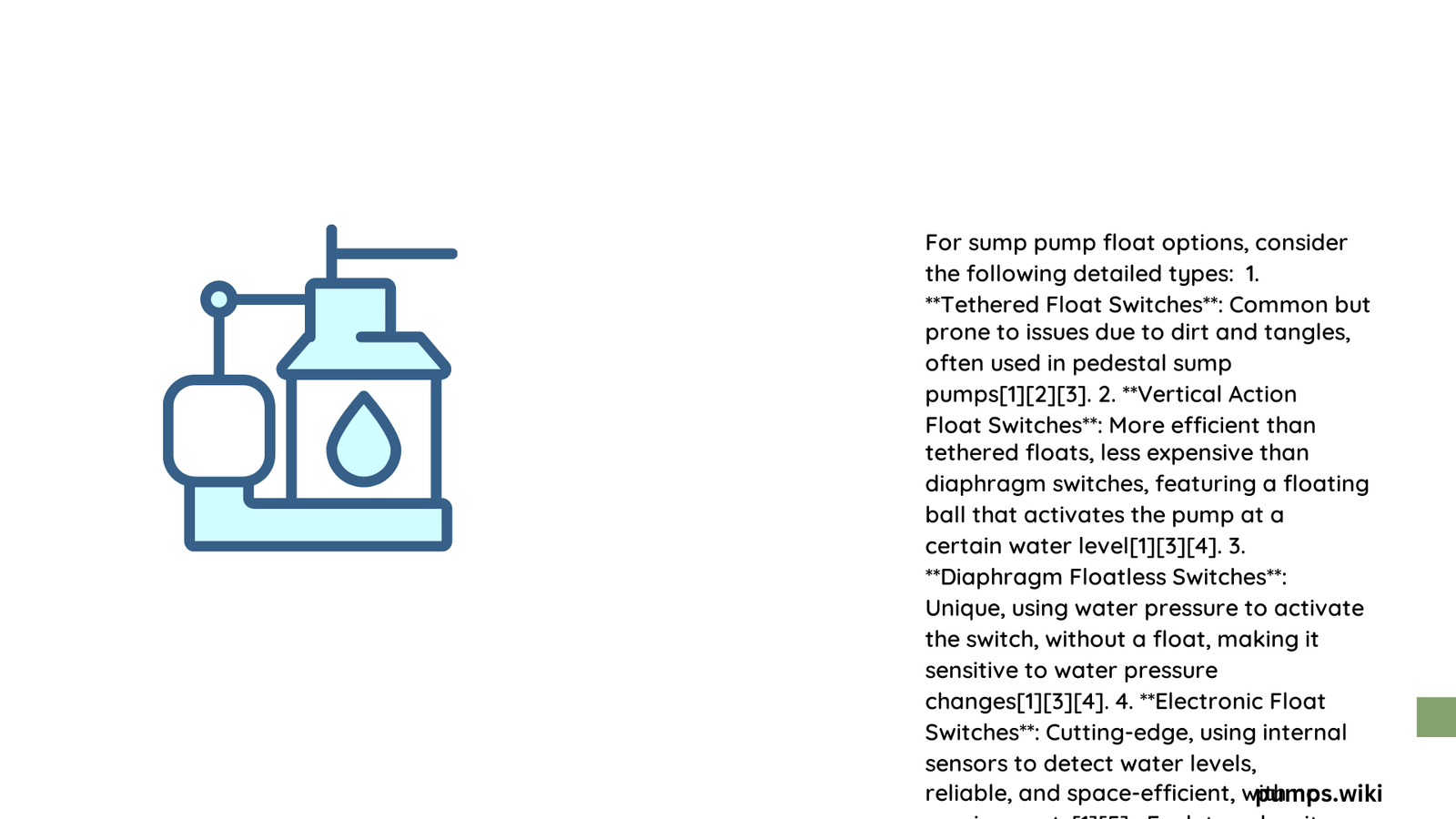Sump pump float options are critical components in basement water management systems, providing automated pump activation and deactivation based on water levels. Homeowners face diverse challenges in selecting the right float switch, with options ranging from mechanical tethered designs to sophisticated electronic sensors. Understanding these mechanisms can prevent basement flooding, protect property, and ensure reliable water removal during critical moisture events.
What Are the Primary Sump Pump Float Options?
Operational Mechanisms of Float Switches
Sump pump float switches come in four primary configurations, each designed to address specific water management needs:
- Tethered Float Switch
- Buoyant float connected by flexible cord
- Ideal for wide, deep basins
-
Allows variable water level activation
-
Vertical Float Switch
- Compact design with rod-mounted float
- Best for narrow, shallow basins
-
Precise water level control
-
Diaphragm Switch
- Pressure-sensitive flexible membrane
- Excellent for congested spaces
-
No moving mechanical parts
-
Electronic Float Switch
- Sensor-based water level detection
- Highly customizable settings
- Requires electrical connection
Comparative Performance Analysis
| Float Type | Space Requirement | Precision | Cost | Durability |
|---|---|---|---|---|
| Tethered | Large | Moderate | Low | Medium |
| Vertical | Small | High | Medium | High |
| Diaphragm | Minimal | Low | Low | High |
| Electronic | Variable | Very High | High | Medium |
How Do You Select the Right Sump Pump Float?

Factors Influencing Float Switch Selection
When choosing a sump pump float, consider these critical factors:
- Basin Dimensions: Measure your sump pit’s width and depth
- Water Volume: Estimate typical water accumulation
- Power Source: Determine available electrical connections
- Budget: Compare initial and long-term maintenance costs
Installation Considerations
- Verify compatibility with existing pump model
- Check cord length and movement range
- Ensure proper alignment and mounting
- Test switch functionality before final installation
What Are Common Troubleshooting Techniques?
Diagnostic Approach to Float Switch Issues
Potential problems require systematic investigation:
- Visual Inspection
- Check for physical damage
- Verify cord/rod movement
-
Look for debris accumulation
-
Functional Testing
- Manually trigger float mechanism
- Observe pump activation sequence
- Measure water level response times
What Maintenance Practices Extend Float Switch Life?
Preventative Maintenance Strategies
- Clean float mechanism quarterly
- Lubricate moving parts annually
- Check electrical connections
- Replace worn components proactively
Expert Recommendations
Professional plumbers recommend:
– Annual professional inspection
– Keeping backup float switch on hand
– Understanding your specific water management needs
Cost and Replacement Guidelines
- Average float switch cost: $30-$100
- Replacement frequency: 3-5 years
- Professional installation: $100-$250
Potential Risks of Improper Float Switch Selection
- Basement flooding
- Pump motor damage
- Increased energy consumption
- Reduced system reliability
Emerging Technologies in Float Switch Design
Newer float switches incorporate:
– Wireless monitoring
– Smart home integration
– Advanced sensor technologies
– Self-diagnostic capabilities
Conclusion
Selecting appropriate sump pump float options requires careful evaluation of your specific water management needs, basin characteristics, and budget constraints.
